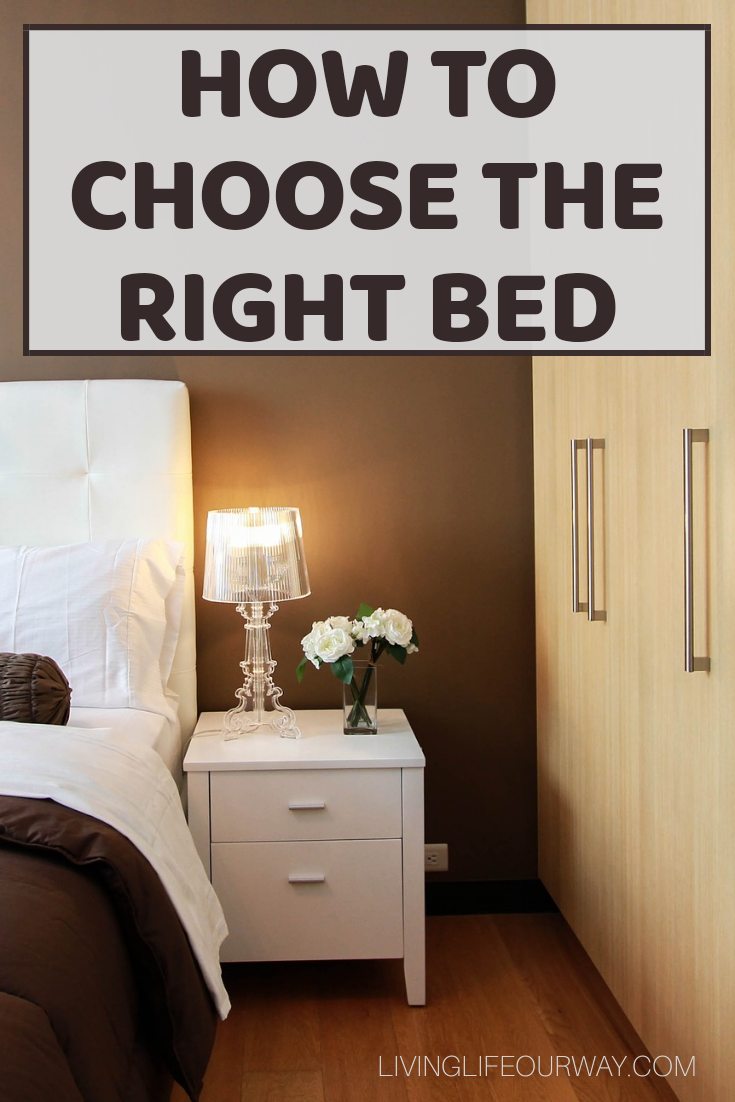*This post is written in collaboration with Bed Guru.
Every parent understands the importance of a good bed, as will every carer. When sleep isn’t guaranteed, or you’re unable to settle into a regular pattern, you need a place to grab what rest you can (no matter how short!) Finding a bed that’s comfortable and works for you means knowing at least what frame and mattress options are most likely to give you that fab feeling of bliss and help you transition smoothly and quickly into sleep. So here is what you need to know if you’re looking to get the most from your bed…

Bases/Frames
There are many types of bed frames and all of these have their own pros and cons. Some popular types are wooden, metal, fabric, divan and ottoman storage. Finding the perfect frame is important as it makes you feel comfortable in your environment.
Wooden frames have lots of colour options that look and can perhaps feel more natural than some other types. It is generally easy to find furniture that matches the frame. Whilst sometimes heavy and more difficult to relocate, wooden frames can often also be repaired and can be disposed of in eco-friendly ways.
Metal frames are sturdy and available in a wide variety of sizes and styles, at different pricing levels. If you are a light sleeper, it may be worth noting they can be noisier than other options. Styles can range from a minimalistic look to something more vintage. They often have various colour options too.
Divans and ottoman beds have storage space in the base, which is fantastic for storing clothes, toys and things you don’t want the children to find! Some have drawers in the base, which means when measuring your room and deciding on which bed to choose you need to take this into account. Other types lift up to reveal the storage, which eliminates this issue.
You can also buy an upholstered bed from Bed Guru to match your bedroom decor. These come in all sorts of colours and materials so you can design the perfect bed for your room! Ask for samples to find your ideal match.
Mattress
Of course, the base of your bed won’t do much for your sleep without a mattress! If the frame is your bed’s body, the mattress is the soul; it’s where all the good stuff is.
It is recommended you change your mattress roughly every seven years, so if you’ve been waking up all achy then it might be time to do so. When buying a new bed, you should be asking whether it’s time for a new mattress too.
Unfortunately, I can’t tell you the right mattress for you. They come in many different levels of hardness and styles; what works for me, might not work for you. A firmness scale of 6 is probably the most common though. But a good starting point is to think about how you most commonly sleep:
• Front – look for medium to mildly firm ranges.
• Back – look for mildly soft to moderately firm ranges.
• Side – look for soft to medium ranges.
As for what type of mattress to get, there are a wide range of choices out there. Sprung types are the most common; pocket sprung mattresses in particular (whereby each individual spring is separate, in its own material, and adapts to body size and shape) offer great comfort and support. They also come in different spring counts to suit different budgets and needs. There are also natural options filled with 100% cotton, wool, cashmere, mohair and silk, which are less likely to irritate sensitive skin than other options, plus they are more sustainable too.
Non sprung mattresses come in different types, such as latex and memory foam. These mould to the body very well and help to relieve pressure. They are less common and can be more expensive, but certainly have their benefits to weigh up against other options.
So, there you have it! Of course, there are other things to consider too like pillows, duvets and sheets, but for the bed itself, these are the things you need to know if you’re looking to update.
What do you look for in a bed? And how do you get the most from your sleeping environment? Let me know in the comments!

